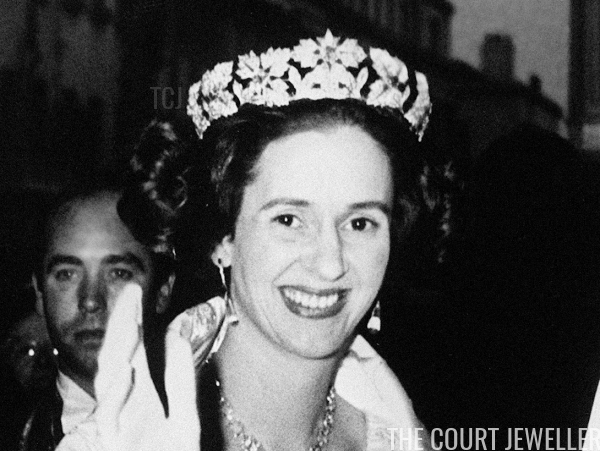 |
| AFP/Getty Images |
Belgium has had a lovely tradition of December royal weddings, and tiaras like today’s piece — the Spanish Wedding Gift Tiara — often arrived in their royal vaults right at this time of year.
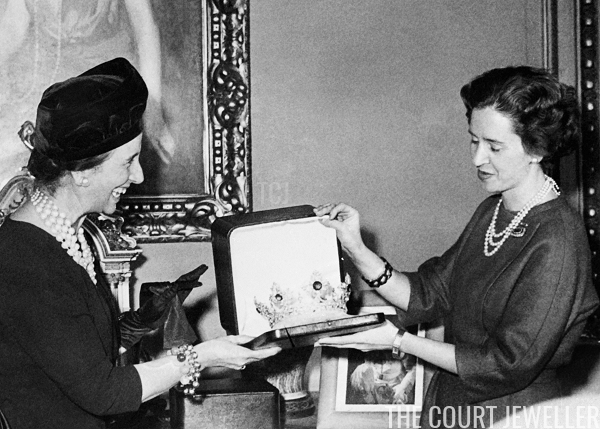 |
| Carmen Franco delivers the tiara to Queen Fabiola, 6 December 1960 (AFP/Getty Images) |
The Spanish Wedding Gift Tiara, as its name suggests, was given to Queen Fabiola of Belgium by the then-leader of Spain, Generalissimo Franco, and his wife, Carmen. The Spanish head of state gave the new queen a tiara because she was born into an aristocratic Spanish family: her maiden name was Doña Fabiola de Mora y Aragón, and her godmother was Queen Ena of Spain. Carmen Franco delivered the tiara to Fabiola on December 6, 1960.
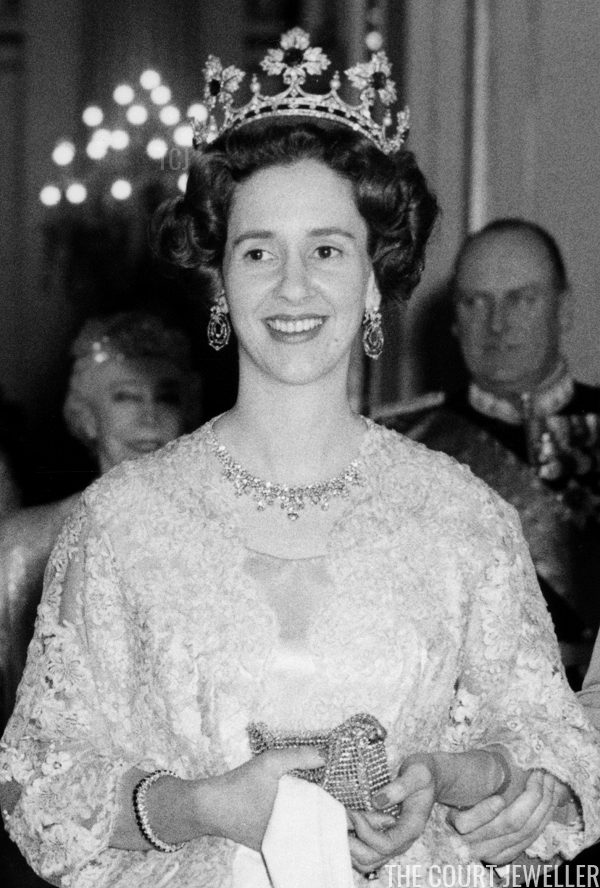 |
| Fabiola wears the tiara at her pre-wedding ball in Brussels,14 December 1960 (AFP/Getty Images) |
Fabiola was working as a nurse when she met King Baudouin through her connections to the Spanish royal family. The two hit it off, and the rest is history. She went from nurse to queen when the pair married in 1960. Fabiola wore the tiara in public for the first time at the reception held the night before her wedding, pairing it with a yellow silk gown. (Fabiola chose to wear a different tiara at her wedding: the Nine Provinces Tiara that had belonged to her husband’s late mother, Queen Astrid.)
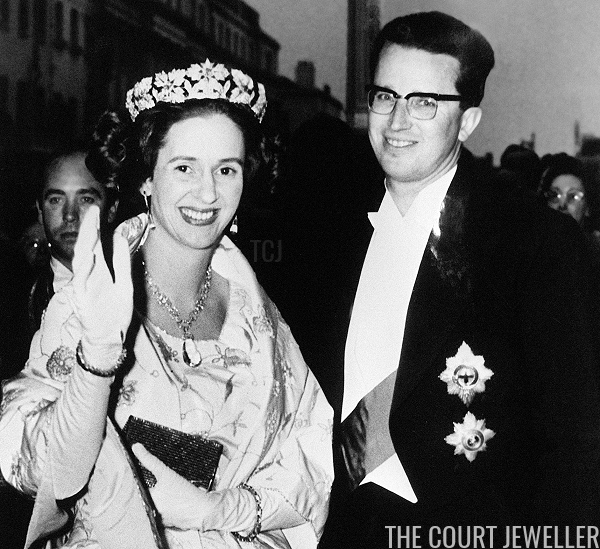 |
| Fabiola wears the tiara for a reception at the Belgian embassy in London, 16 May 1963 (AFP/Getty Images) |
The piece can be worn not only in three different configurations but also with three different sets of colored gemstones. The tiara is a feat of construction, endlessly adaptable and yet still balanced and lovely. It can be worn as a large but elegant wreath tiara.
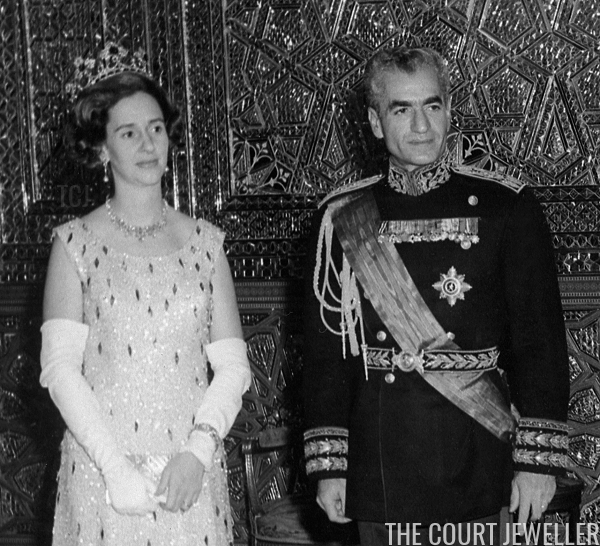 |
| Fabiola wears the tiara in the Marble Palace in Iran, 23 November 1964 (AFP/Getty Images) |
The leaf elements can also be worn upright, transforming the piece into a coronet. Fabiola wore the tiara in this coronet setting for an official visit to Iran in November 1964.
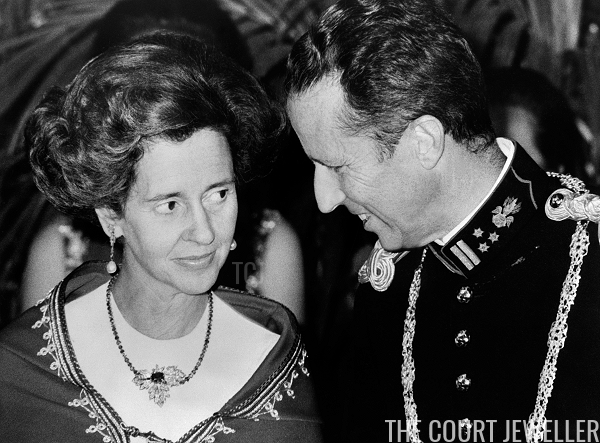 |
| Fabiola wears part of the tiara for a reception in Brussels, May 1978 (AFP/Getty Images) |
Even better, Fabiola also wore the elements as pendants on a necklace; she’s wearing one of them on her necklace in the photo above, from a 1978 reception in Brussels.
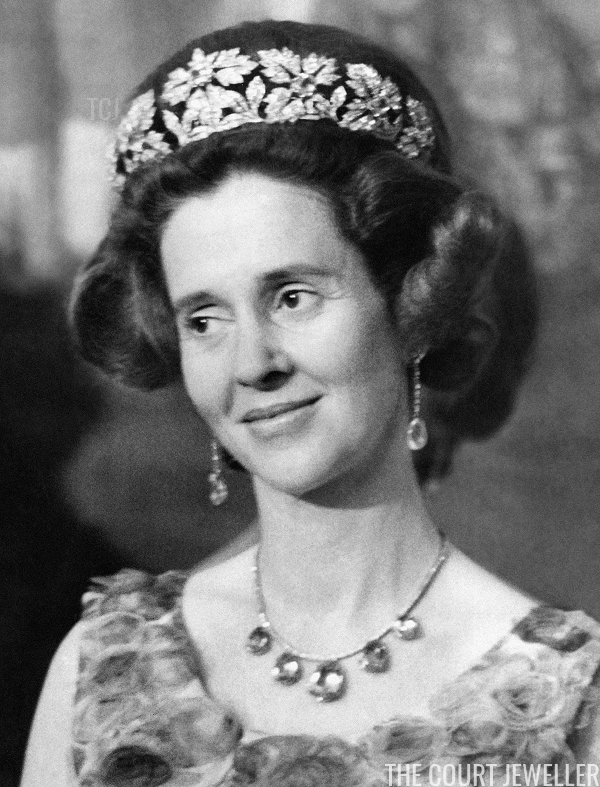 |
| Fabiola wears the tiara in Brussels, 9 June 1971 (AFP/Getty Images) |
The center of each diamond leaf element is studded with a gemstone, and those too are interchangeable. The piece can be worn with rubies, emeralds, or aquamarines. Add in Fabiola’s impressive bouffant, and you’ve got a truly remarkable tiara.
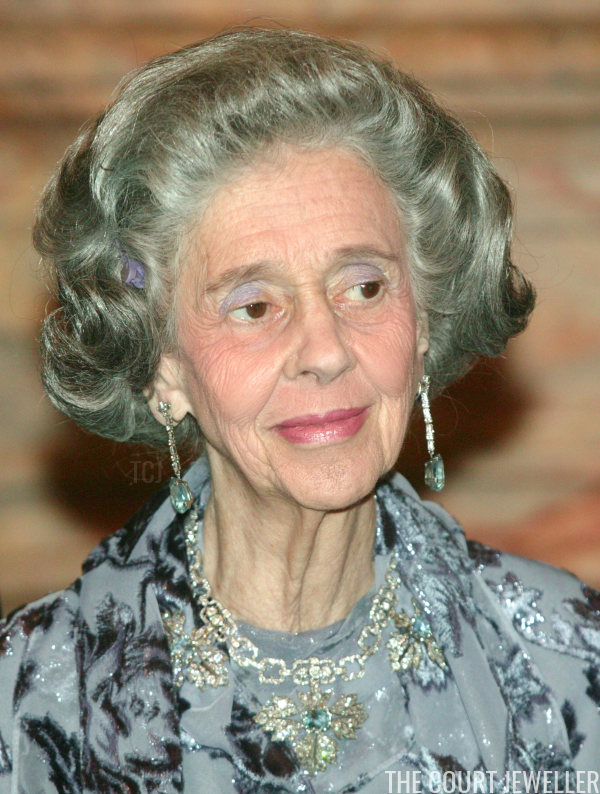 |
| Fabiola wears the tiara as a necklace during a state visit from Poland, 26 October 2004 (Mark Renders/Getty Images) |
Fabiola continued to wear the tiara even after Baudouin’s sudden death in 1993. I believe the 2004 Polish state visit, pictured above, was the last time she wore the piece in public, as a necklace with aquamarine center stones. Appropriately, she also wore the piece as a tiara at the Spanish state visit in 2000.
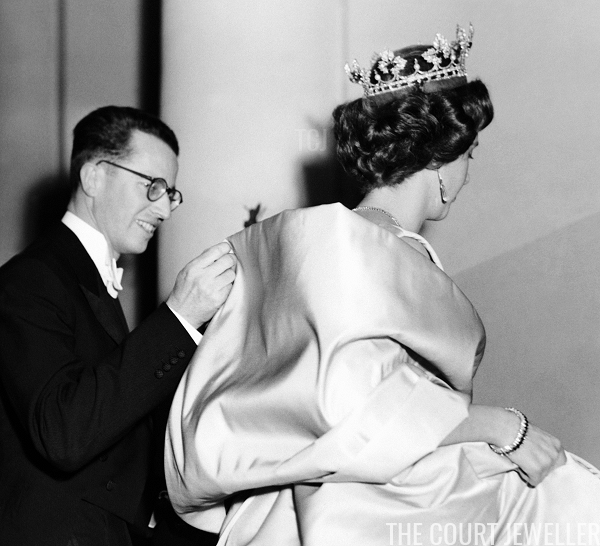 |
| AFP/Getty Images |
It’s a good piece to have if you’re a royal woman who, like the ladies of the Belgian royal family, doesn’t have tons of tiaras at your disposal. Many, including me, hope that Fabiola decided to bequeath this tiara to her niece-in-law, Queen Mathilde.
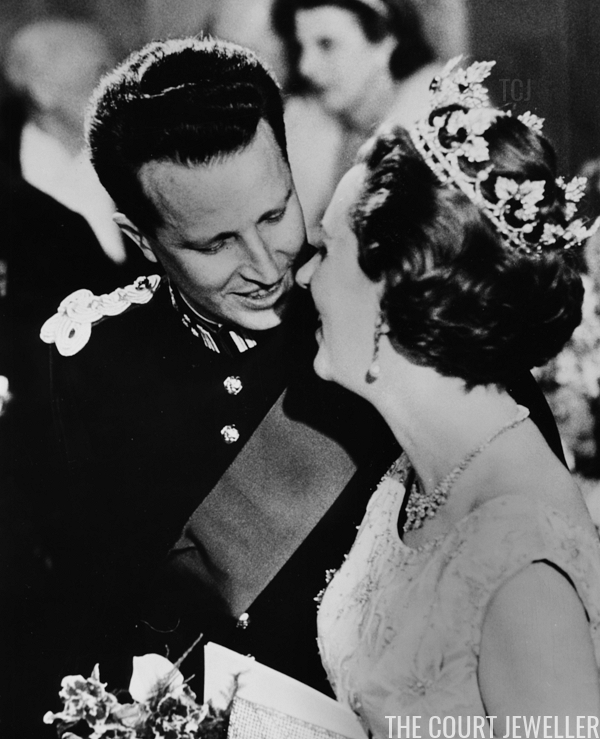 |
| Fabiola wears the tiara for a ballet gala in Brussels, 11 May 1966 (Central Press/Getty Images) |
As Mathilde has been seen in several other pieces of jewelry from Fabiola’s collection, including the Wolfers Tiara, I’d say it’s a good possibility that she decided to do exactly that. Keeping Fabiola’s tiara in the family, and having it worn in public by the queen, is a wonderful way to honor Fabiola’s legacy in Belgium.
Leave a Reply